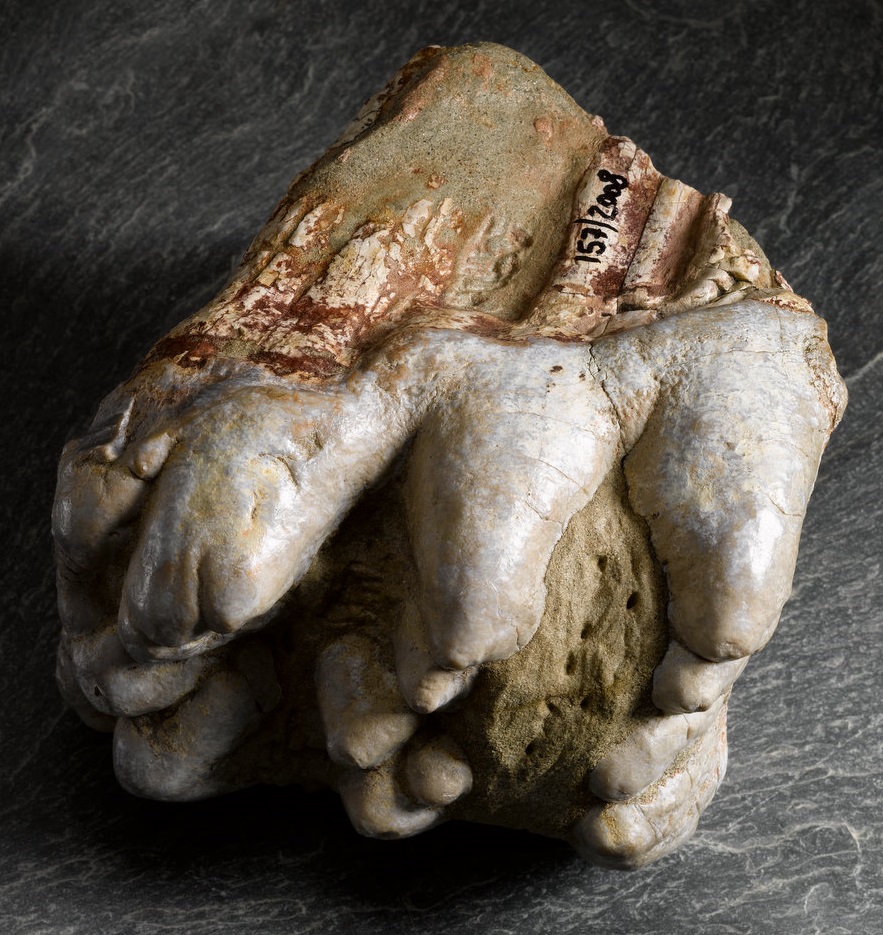Taking inspiration from the themes of ice and expedition that appear in the film ‘The Silver Wave’ which goes on display at the museum on 2 Nov, this month’s chosen object is part of a Mastodon.

Mastodons were mammals that went extinct at the end of the Pleistocene around 10,000 to 11,000 years ago. This mass extinction is thought to have occurred due to a combination of change in climate and over-exploitation by Paleo-Indians. The large mammoth-like animals wondered North and Central America in the Miocene or Pliocene (between 23.03 and 2.58 million years ago) up until Pleistocene (between 2,580,000 to 11,700 years ago) – with each geological periods marking a change in temperatures and environment. The theory that the mastodon’s genetic diversity declined due to rising temperatures is support in DNA studies of the North American mastodon, meaning that as the continental ice sheets became smaller so did the animal’s geographical range.
They were predominantly forest-dwelling animals, feeding on leaves on their distinctively blunt molar teeth. Measuring up to 3 metres in height, shorter than modern elephants, they were heavily built with smaller ears and shorter legs with red, furry hair that kept them warm.
Learn more info about our specimen here: https://rammcollections.org.uk/object/157-2008/
This content is viewable by members only. Login or sign up to get access.

